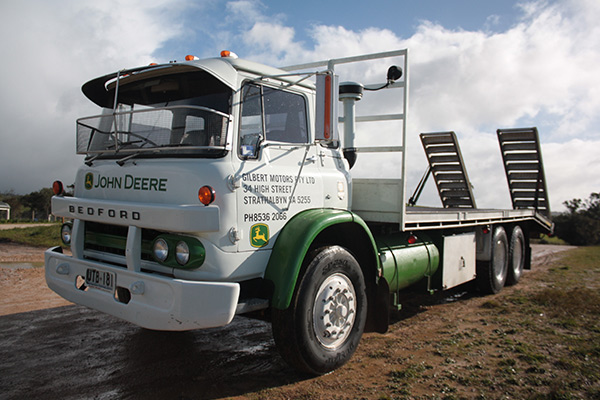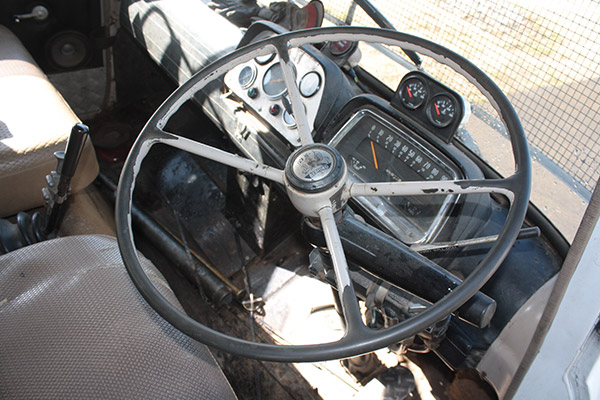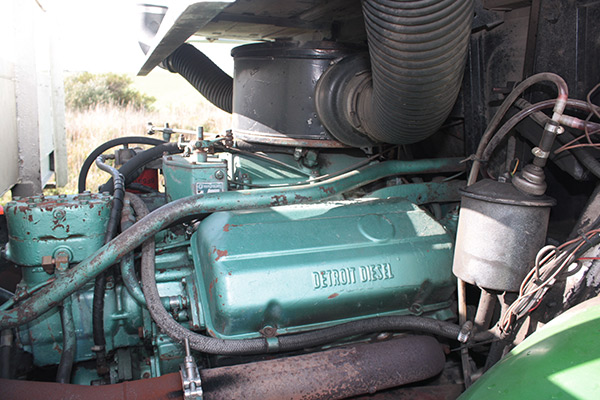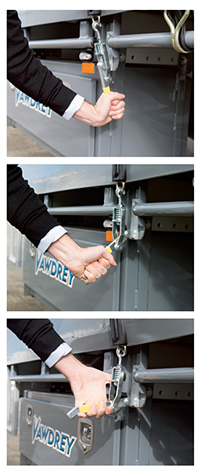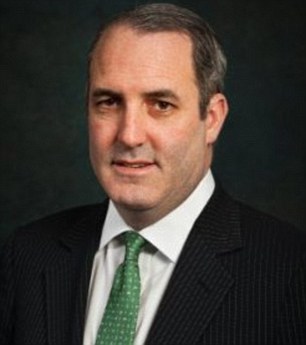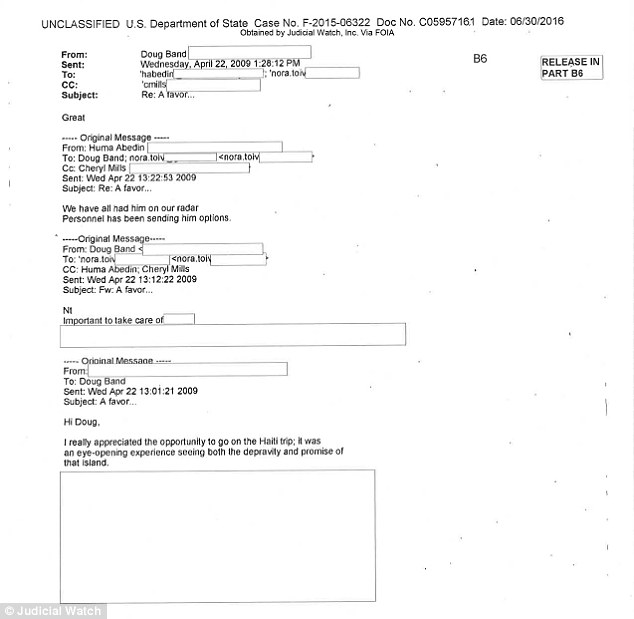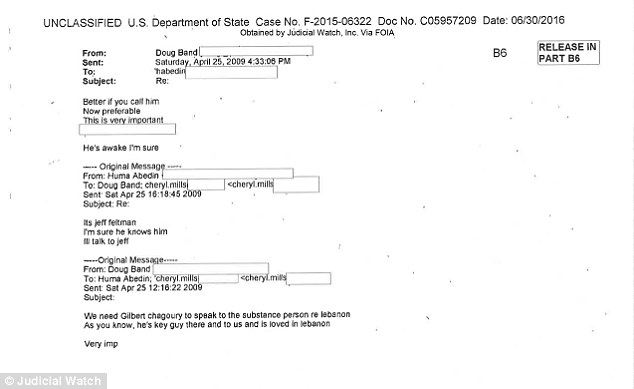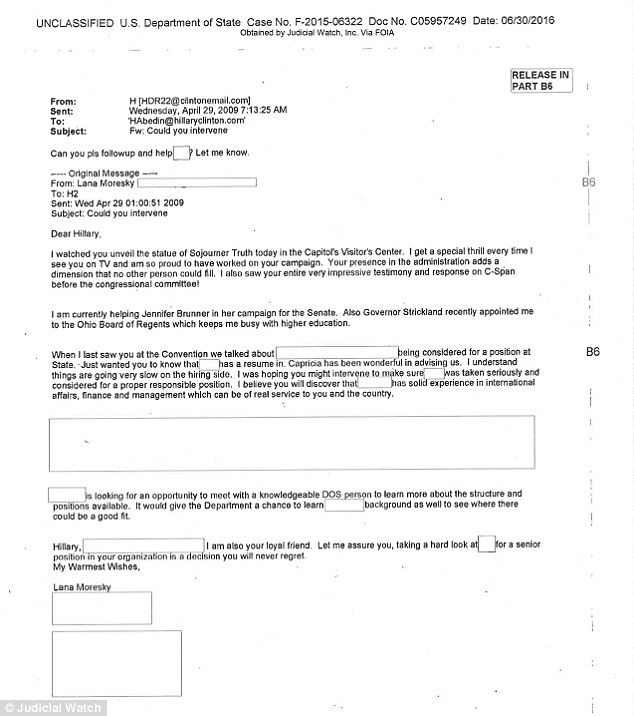
kscarbel2
Moderator-
Posts
17,892 -
Joined
-
Days Won
86
Content Type
Profiles
Forums
Gallery
Events
Blogs
BMT Wiki
Collections
Store
Everything posted by kscarbel2
-
Volvo Trucks USA has withdrawn the video.
-
International Truck introduces Accelerator Write-Up mobile application Truck News / July 28, 2016 Navistar announced today that it will provide its new Accelerator Write-Up – a mobile application that will expedite customers’ service visits by streamlining the write-up and diagnostic process – to its service departments at all 700 International Truck and IC Bus locations. “The Accelerator Write-Up Tool was designed with extensive dealer input with the goal of saving time, removing ambiguity and standardizing procedures during the service check-in process,” said Mark Reiter, Navistar vice-president, Customer Support. “The goal is to maximize customer uptime and provide a best-in-class customer experience.” The Accelerator Write-up is an Android mobile application that simplifies the customer experience at an International Truck or IC Bus dealership by collecting customer vehicle issues using a multiple-choice questionnaire to assign corresponding complaint codes, then linking these issues to action plans that provide service technicians with clear direction on how to diagnose and repair specific vehicle issues. The application allows the customer and dealer collaborate to 1) confirm customer information; 2) collect the customer vehicle issue by assigning it a code; 3) capture photos of all four corners of the vehicle; 4) connect to the vehicle to capture a health report and 5) agree to the terms of service. This write-up data then becomes accessible to customers subscribing to OnCommand Connection, Navistar’s remote diagnostics system, giving customers the ability to view their vehicle’s complete service history and health reports from their own computer or mobile device. “The new Accelerator Write-up application supports our leadership in the connected vehicle space,” said Terry Kline, chief information officer, Navistar. “This is just one of an entire marketplace of high-tech tools that are currently in development to better meet the needs of our customers.” Dealerships will begin implementing the Accelerator Write-up on July 28, 2016. To find an International Truck or IC Bus dealer, visit www.internationaltrucks.com or www.icbus.com.
-
International Trucks Press Release / August 10, 2016 .
-
No sales marketing literature was ever printed because Volvo killed the program.
-
Much thanks to your friend for sharing these photographs. The black engine appears to be a "display" unit. Does it have unit pump injection? Mack Trucks had planned to re-launch the E9 V-8 in 2003 with Bosch electronic unit pump (EUP) injection. Revisions allowed it to meet the latest EPA standards The military spec units were probably built in 2003.
-
U.S. complains after Philippines president uses homophobic slur to describe envoy The Washington Post / August 10, 2016 The first rule of diplomacy? Don't use a homophobic slur when referring to a foreign dignitary. But that's exactly what Rodrigo Duterte, president of the Philippines, did in televised remarks Friday. Washington reportedly summoned Manila's charge d’affaires in Washington on Monday to complain, in what must have been a rather awkward meeting. Duterte, a fast-talking former mayor who swept to power this spring, was telling reporters about his relationship with U.S. Ambassador Philip Goldberg when he made the wildly homophobic — and utterly undiplomatic — remark. "As you know, I’m fighting with [U.S. Secretary of State John F. Kerry’s] ambassador. His gay ambassador, the son of a whore. He pissed me off,” Duterte said. (He was speaking in Tagalog, the main language of the Philippines, and the word for "son of a whore" isn't quite as pointed as it seems in English. It might be compared to calling someone an S.O.B.) During this year's election campaign, Duterte drew national and international condemnation for saying he wished he had "been first" to rape an Australian missionary who was assaulted and killed during a prison riot. The Australian ambassador objected, as did Goldberg. Duterte told them both to "shut up." The not-so-presidential comment came at a sensitive time. With China pressing its claims to virtually the entire South China Sea, the Philippines and the United States have moved to deepen their long-standing military alliance. A defense pact upheld this year allows the U.S. military to build facilities at five Philippine bases, and more U.S. ships than ever are stopping by the former U.S. naval base at Subic Bay. But Duterte has gone back and forth on his relationship with the United States, a fact that has raised questions about how he would handle a potential conflict in the South China Sea. During his campaign, Duterte said he might be willing to make a deal with China in return for major infrastructure spending on his home island, then quixotically vowed to ride a water scooter to the disputed Spratly Islands in the South China Sea and plant the Philippine flag. As president, he has thus far taken a more restrained approach, potentially laying the groundwork for better ties with China. Duterte is also facing criticism from the United States and others over a bloody crackdown on alleged drug dealers. [‘Shoot him and I’ll give you a medal’: Duterte urges public to kill drug lords] Since Duterte took office, more than 400 suspected drug dealers have been killed, 4,400 have been arrested, and more than 600,000 people have surrendered themselves to authorities to avoid being killed, the Associated Press reported. [In this area, he’s effective] “We are concerned by these detentions, as well as the extrajudicial killing of individuals suspected to be involved in drug activity in the Philippines,” U.S. State Department spokeswoman Elizabeth Trudeau said Monday. Goldberg is not the first dignitary to be subjected to crude comments from Duterte. The now-president once made headlines for using the same "son of a whore" word to describe the pope. Duterte later issued a letter of apology and said he would fly to the Vatican to apologize. He then backpedaled on the visit bit.
-
David Axe, Reuters / August 10, 2016 Britain used to boast the most powerful navy in the world. No more. That’s a serious problem for allies like the United States. Traditionally, Britain’s Royal Navy has been the U.S. Navy's closest partner. The two have fought together against most every foe. So any weakening of the Royal Navy also erodes Washington's naval power. Today, however, the Royal Navy is a shadow of its former self. Government budgeteers have repeatedly, and excessively, cut the numbers of its ships, planes and manpower. It can barely patrol the United Kingdom’s own waters, much less project British influence abroad. Though London officials now vow to reverse the decline, it might be too late. With morale plummeting, and its few remaining ships frequently malfunctioning at sea, the Royal Navy’s suffering might be terminal. The timing couldn’t be worse. The West is mobilizing to defeat Islamic State, deter an increasingly aggressive Russia and manage China's meteoric rise as a world power. The British fleet's collapse is an object lesson for cash-strapped governments struggling to balance competing budgetary needs in a seemingly ever more volatile world. Yes, navies are expensive. They require long-term planning, work and funding. In peacetime, the fleet’s benefit is often invisible, marked by the absence of overt conflict. Yet navies remain crucial to national defense. Patrolling international waters with sophisticated sensors and powerful, long-range weaponry, they can respond more quickly to crises and bring more firepower to bear than can air forces (which require nearby runways) and armies (which move slowly). Navies that die from neglect leave a void that rogue states, terrorists and criminals can quickly fill. It takes navies to keep an eye on vast ocean regions. Remove what was once the world's leading fleet, and you create a virtual security vacuum. During World War Two, the British fleet was still dominant. On D-Day in 1944, it was able to send more than 900 British warships across the English Channel to escort the Allied troops who would liberate Europe from Nazi Germany. As recently as 1982, the Royal Navy could quickly muster no fewer than 115 ships — including two aircraft carriers carrying jet fighters, plus 23 destroyers and frigates — to retake the Falkland Islands from Argentina. Today, the British navy doesn’t even have jet fighters. It mothballed its last Harriers in 2010. It possesses just 89 ships. (By comparison, the U.S. Navy and Military Sealift Command, the Pentagon's fleet of support ships, have roughly 400.) Britain’s fleet has declined amid steady defense budget cuts, from 4.1 percent of gross domestic product in 1988 to 2.6 percent in 2010. Reductions in 2010 sliced another 8 percent in real terms. As part of a defense review in 2015, London vowed to stop cutbacks on the fleet. But the damage has been done. On paper, the Royal Navy's 89 ships include one helicopter carrier, six amphibious assault ships, six destroyers, 13 frigates, seven attack submarines and four ballistic-missile submarines. The rest are minesweepers, survey ships and other support vessels, many no larger than the U.S. Coast Guard's small patrol ships. Only the six destroyers, 13 frigates and seven attack submarines can be considered true frontline vessels, with adequate sensors, weapons and protection to fight and survive in a battle with a sophisticated foe. The other ships require escort through dangerous waters. Roughly half the ships are in routine maintenance or training at any given time. Several others are committed to small standing patrols, which leaves just a handful of vessels to respond to emergencies. But that's assuming there are enough sailors to operate the ships. The Royal Navy has shed people faster than ships. Britain had 39,000 sailors in 2000. It now has a little more than 29,000, at least 2,000 short of its authorized strength. Fleet planners tried to address the personnel shortage by sidelining two of its most powerful ships. This summer, for example, the Royal Navy placed the large Type 23 frigate HMS Lancaster in “extended readiness”: It was tied up pierside, its crew assigned to other vessels. Meanwhile, the new Type 45 destroyer HMS Dauntless suffered serious problems with generators and entered port for repairs that could last at least until 2019. As with Lancaster, the fleet dispersed Dauntless' sailors to other vessels. With those vessels out of action, the Royal Navy's real strength dropped from 26 fighting ships to an unprecedented modern low of 24 [just 24 fighting ships available to call on!]. Last month, the new attack submarine HMS Ambush collided with a merchant vessel off Gibraltar. The sub suffered serious damage and limped back to Britain for repairs that could take months, if not longer. That accident reduced the Royal Navy's undersea combat strength by nearly 15 percent. It was a stark reminder that Britain has almost no naval strength in reserve. As budget reductions cut deeper, the British fleet withdrew from much of the world. Before 2010, the Royal Navy played a leading role in efforts to curb piracy off the Somali coast. British frigates formed the core of various international task forces that patrolled the Indian Ocean and Red Sea. But in 2012, London quietly ended its permanent role in the counter-piracy efforts. Britain also felt the dearth of ships much closer to home. In January 2014, the resurgent Russian navy, which under President Vladimir Putin has embarked on an extensive modernization program, sailed a missile-armed cruiser through the North Sea. The Russian ship approached to within 30 miles of Scotland. The Royal Navy's crucial job is safeguarding British home waters. But the only available warship, the destroyer HMS Defender, was at Portsmouth on England's southern coast. Defender took 24 hours to make the 600-mile journey to Scotland. It eventually located the Russian ship and, after the two crews exchanged a few radio messages, Defender escorted the cruiser away from British territory. A few months later, Islamic State fighters swept through northwestern Iraq. The world mobilized air and sea power to help Baghdad push them back. The U.S. and French navies deployed aircraft carriers to launch air strikes on the militant forces. The U.S. Navy even occasionally positioned two flattops in Middle East waters. But for the first time in a century, Britain could do little to help. It had no aircraft carriers capable of supporting fixed-wing planes. London had decommissioned its last — HMS Illustrious — in August 2014. Illustrious' Harrier strike jets had preceded the vessel into retirement. Perhaps most damning, in 2016 the Royal Navy withdrew from the South Atlantic after 34 years of deploying at least one large warship to deter Argentina from again trying to seize the Falklands Islands. Under successive Labour and Conservative governments, London has consistently cut the Royal Navy for more than a decade, while denying that the cuts were detrimental to national security. The government pointed to several multibillion-pound shipbuilding programs for new frigates, destroyers and submarines, as well as an ambitious plan to build two new large aircraft carriers and outfit them with F-35 stealth fighters. But the new ships are too few, too late. They are also too lightly armed to adequately replace older vessels. Much less to expand and enhance the fleet. In recent years, the Royal Navy has replaced 12 old Type 42 destroyers with just six new Type 45s, which are larger and more heavily armed than the Type 42s but mechanically unreliable. In addition, there are too few to handle all the missions the older vessels once undertook. The fleet is getting just seven new Astute-class attack submarines, to replace 12 old Swiftsure- and Trafalgar-class subs. As with the Type 45 destroyers, the Astutes are bigger and pack more firepower than the ships they're replacing. But like the Type 45s, the Astutes have proved difficult to operate. In any case, there aren't enough to cover all the areas the older submarines once patrolled. Today there are 13 old Type 23 frigates in the fleet. The government has approved just eight new Type 26 frigates. Meanwhile, it is promising to build at least five smaller Type 31s to help keep up the fleet's strength. But the lighter Type 31s could lack the firepower and protection to be a credible deterrent to Russia's far heavier vessels. Indeed, many of Britain’s newest ships are remarkably light. London has placed orders over the past two years for several small, lightly equipped patrol vessels. The net effect is a Royal Navy that's increasingly made up of small, underarmed vessels that maintain the official ship count, but continue the hollowing-out trend that has steadily sapped its real strength. The new aircraft carriers are perhaps the best examples. The two Queen Elizabeth-class ships, which are 920 feet long and displace more than 60,000 tons of water, are the biggest warships Britain has produced. When they enter frontline service in 2020, they should restore the at-sea aviation capability that the Royal Navy lost when it retired its Harrier jets in 2010. The Queen Elizabeths, however, were planned for a larger fleet. An aircraft carrier requires more planes and escorts than Britain can provide. The U.S. Navy, for example, never deploys a carrier without 60 aircraft aboard and a convoy of three or four destroyers and cruisers, a submarine and several supply ships. The Royal Navy expects to deploy just one carrier at a time and keep the second at home. It projects that its new carriers will only deploy between 12 and 24 F-35s — too few to use the ships to their full potential. In addition, assigning the vessels needed to accompany and supply the carrier — three or four frigates and destroyers as escort and a several supply ships to sustain it — would monopolize the Royal Navy's entire deployable strength. A 60,000-ton carrier can accommodate 50 or more aircraft. London plans to buy just 48 F-35 fighters, which means many could be in maintenance or training at any given time. Navies are indeed complex and expensive. Stop paying attention to your fleet, and it will go away. For Britain’s allies, there’s a powerful lesson in that.
-
CNN / August 10, 2016 US Marines need to put away their cell phones, forget about their fancy coffees and get back to doing what Marines used to do -- dig a foxhole, cover up, stay quiet and be wary, the Corps' top officer says. Speaking at a conference on the future of expeditionary warfare at the Washington-based Center for Strategic and International Studies on Tuesday, Gen. Robert B. Neller, commandant of the Marines Corps, said today's Marines have gotten a little too comfortable with modern conveniences in a way that could prove disastrous on the battlefield. Neller said the Marines and Navy had seen exercises in which their personnel's use of mobile devices could give away positions to adversaries. One involved a Marine Expeditionary Force (MEF), a large unit designed for front-line combat operations. "What do you think the largest electromagnetic signature in the entire MEF headquarters emanated from? The billeting area. Why? Because everybody had their phone on. So we're going to have to take everybody's phone away from them?" he asked. "I know that sounds silly, but it's not silly," Neller said at the conference. "So, okay, Marines: We're going to go to the field for 30 days; everybody leave your phone in the car and tell your significant other or your mom, your aunt, your uncle, that you're not going to get 75 texts each day and answer them." The Navy has come up with plans to reduce its reliance on modern electronics to make its force harder to trace, going so far as to have sailors re-learn navigating by the stars instead of using the Global Positioning System, he said. But present-day society's most common tendencies can compromise those plans, the general said. "We realized that we didn't have the right solution because, you know, Seaman Hicks decided she wanted to check her Facebook page, and so she walked out on the weather deck at night with her phone, and what's that phone got? It's got GPS. So anybody in the world is going to know there's some GPS somewhere out floating across the ocean, most probably on a ship," Neller said. At the same time, Marines need to go back to basics as to what it means to be in the field, he said. That means leaving fixed bases, being on the move and doing so as covertly as possible. "When was the last time ... when you saw Marines or soldiers operating in Iraq or Afghanistan when they camouflaged their face or they broke up the outline of their helmet with camouflage so they couldn't be seen? When was the last time you saw that?" he asked. "We've been operating out of fixed positions. We have not moved across the ground. We have not maneuvered. We have not lived off the land," Neller said. "We've been eating in chow halls and drinking green bean coffee. That's pretty nice." But that's not where the Corps needs to be on the battlefield, he said. "You're living out of your pack, you're going to stop at night, you're going to dig a hole, you're going to camouflage, you're going to turn off all your stuff, and you're going to sit there, and you try to sleep," he said. "And you've got to be careful to not make any noise, and you're going to try to have absolutely no signature. Because if you can be seen, you will be attacked. That's the difference, and that's where we've got to get."
-
- 1
-

-
'Truly a piece of evil': 'Grim Sleeper' sent to death row Associated Press / August 11, 2016 A serial killer known as the "Grim Sleeper" was sentenced to death Wednesday for the murders of nine women and a teenage girl that went unsolved for years as the body count grew in a poor section of Los Angeles haunted by the scourge of crack cocaine. The moment of reckoning for Lonnie Franklin Jr. came after those whose lives were altered by his violence questioned how he could have been so cruel and shown so little remorse. "You are truly a piece of evil," said Enietra Washington, who managed to survive after being shot and testified against him at trial. "You're right up there with Manson." The killings occurred over more than two decades. Prosecutors presented evidence at trial linking Franklin to 14 slayings, including four women he wasn't charged with killing. They have said he may have had as many as 25 victims. Franklin, 63, avoided suspicion for decades, working as a city trash collector and onetime garage attendant for Los Angeles police. He denied any role in the killings to investigators but didn't utter a word in his defense during his lengthy trial or address the judge at sentencing. Judge Kathleen Kennedy, a 28-year veteran of the court, said she concluded Franklin preyed on defenseless women because of deep-seated hatred toward them. "I can't think of anyone I've encountered in all my years in the criminal justice system that has committed the monstrous crimes that you have," she said. The judge didn't buy the defense argument that California's death penalty was unconstitutional and should be set aside. She also rejected a motion for a new trial. Deputy District Attorney Beth Silverman said Franklin was irredeemable. "He is a psychopathic, sadistic serial killer who takes joy in inflicting pain on women and killing them," she wrote in her sentencing brief. Franklin showed no emotion throughout trial and six years of court hearings. Franklin was connected to the crimes after a task force that re-examined the old cases discovered that DNA from Franklin's son, which was in a database because of an arrest, showed similarities to genetic evidence found on some of the "Grim Sleeper" victims. A detective posing as a busboy at a pizza parlor collected utensils and crusts while Franklin was attending a birthday party. Lab results connected him to some of the bodies and led to his arrest. Investigators found a gun used in one of the killings and Polaroid photos of victims — including one of Washington, partly nude and bleeding in Franklin's garage after his arrest. Nearly three decades after the attack, she pointed him out in court, saying, "That's the person who shot me." Franklin killed seven women between 1985 and 1988 and a 15-year-old girl and two women between 2002 and 2007. Most were fatally shot at close range, though two were strangled and two were shot and choked. The killing of Thomas was later found to have occurred during that gap and police now say they don't think Franklin stopped killing until his arrest in 2010. Franklin's conviction will be automatically appealed. The likelihood he'll be executed is slim because of challenges over the state's lethal injection procedure. No one has been put to death in San Quentin State Prison since 2006 and there are nearly 746 inmates on death row. .
-
"People should and do trust me" - Hillary Clinton
kscarbel2 replied to kscarbel2's topic in Odds and Ends
The New York Times / August 10, 2016 A new batch of State Department emails released Tuesday showed the close and sometimes overlapping interests between the Clinton Foundation and the State Department when Hillary Clinton served as secretary of state. The documents raised new questions about whether the charitable foundation worked to reward its donors with access and influence at the State Department, a charge that Mrs. Clinton has faced in the past and has always denied. In one email exchange, for instance, an executive at the Clinton Foundation in 2009 sought to put a billionaire donor in touch with the United States ambassador to Lebanon because of the donor’s interests there. In another email, the foundation appeared to push aides to Mrs. Clinton to help find a job for a foundation associate. Her aides indicated that the department was working on the request. Mrs. Clinton’s presidential campaign, which has been shadowed for 17 months by the controversy over the private email server she used exclusively while at the State Department, said that the emails released Tuesday had no bearing on the foundation’s work. The State Department turned the new emails over to a conservative advocacy group, Judicial Watch, as part of a lawsuit that the group brought under the Freedom of Information Act. The documents included 44 emails that were not among some 55,000 pages of emails that Mrs. Clinton had previously given to the State Department, which she said represented all her “work-related” emails. The document release centers on discussions between Mrs. Clinton’s aides and Clinton Foundation executives about a number of donors and associates with interests before the State Department. Tom Fitton, the president of Judicial Watch, charged that Mrs. Clinton “hid” the documents from the public because they appeared to contradict her official pledge in 2009 to remove herself from Clinton Foundation business while leading the State Department. The documents indicate, he said in a telephone interview, that “the State Department and the Clinton Foundation worked hand in hand in terms of policy and donor effort.” “There was no daylight between the two under Mrs. Clinton, and this was contrary to her promises,” he added. A number of the email exchanges released Tuesday included Huma Abedin, who was a top adviser to Mrs. Clinton at the State Department and later worked at the Clinton Foundation. In April 2009, Douglas J. Band, who led the foundation’s Clinton Global Initiative, emailed Ms. Abedin and Cheryl D. Mills, another top adviser to Mrs. Clinton, for help with a donor. Mr. Band wrote that he needed to connect Gilbert Chagoury, a Lebanese-Nigerian billionaire who was one of the foundation’s top donors, with someone at the State Department to talk about his interests in Lebanon. “It’s jeff feltman,” Ms. Abedin answered, referring to Jeffrey Feltman, who was the American ambassador to Lebanon at the time. “I’m sure he knows him. I’ll talk to jeff.” Mr. Band asked her to call Mr. Chagoury immediately if possible. “This is very important,” he wrote. In a separate email exchange, Mr. Band passed along to Ms. Abedin and Ms. Mills a request for “a favor” from an associate who had recently been on a Clinton Foundation trip to Haiti and was apparently seeking work at the State Department. The State Department deleted much of the information about the associate, including his name and the outcome of the job referral, in turning over the emails to Judicial Watch. In one undeleted section, however, Mr. Band wrote that it was “important to take care of” the associate’s request. A short time later, Ms. Abedin wrote back to say: “We all have him on our radar. Personnel has been sending him options.” The Clinton campaign suggested [nice try] that Mr. Band was acting in his capacity as former President Bill Clinton’s personal assistant, not in his role overseeing the Clinton Global Initiative. Regarding the exchanges between Mr. Band and Mrs. Clinton’s aides, the campaign said in a statement: “Neither of these emails involve the secretary or relate to the foundation’s work. They are communications between her aides and the president’s personal aide, and indeed the recommendation was for one of the secretary’s former staffers who was not employed by the foundation.” The campaign did not elaborate. The FBI spent more than a year examining Mrs. Clinton’s use of a private email account, but it is not clear how the work of the Clinton Foundation figured into that investigation. James B. Comey Jr., the FBI director, was noticeably circumspect in an appearance last month before the House oversight committee when Republicans questioned whether the investigation had looked at the Clinton Foundation. Twice asked, he refused to say. The FBI approached the Department of Justice earlier this year, requesting that the DOJ open an investigation of the Clinton Foundation. But the DOJ declined, stating that it had looked into the Clinton Foundation a year before and didn't find enough evidence. -
Peterbilt to launch Model 567 Heritage edition in September
kscarbel2 replied to kscarbel2's topic in Trucking News
You're 100 percent right on the reduction of North American truck choices. No, the new shared cab does not share any architecture with the DAF LF, CF or XF. -
"People should and do trust me" - Hillary Clinton
kscarbel2 replied to kscarbel2's topic in Odds and Ends
Associated Press / August 9, 2016 Speaking in Wilmington, North Carolina on Tuesday, Rudy Giuliani said that Hillary Clinton caused the death of Shahram Amiri, an Iranian national who was hanged on Sunday “revealing secrets to the enemy.” Hillary Clinton used her private email server to discuss details of the Iranian nuclear scientist who was put to death for giving information to the CIA on Tehran's nuclear program during Clinton's tenure as secretary of state. “Today it was revealed that some of those Hillary Clinton emails contain the name of a man named Amiri,” Giuliani said. “Amiri was executed by the Iranians several days ago.” “Remember Hillary told us there was no top secret information on her emails? Remember she told us that?” Giuliani asked. “Well, she lied!” “And I don't know the connection between that and the death of Mr. Amiri, but what I do know is it put a lot more attention on him. When they found those emails, it put a lot more attention on him. It certainly put him at great risk, even if they didn't find them.” Trump said Monday that “many people are saying that the Iranians killed the scientist who helped the U.S. because of Hillary Clinton's hacked emails.” Giuliani said that when FBI Director James Comey declared that Clinton was “extremely careless” with classified information in her private emails, “he was being kind!” “I used to be a U.S. attorney,” he said. “If she applied for a job with a U.S. attorney with me, I wouldn't be able to hire her. You know why? She wouldn't pass an FBI background check.” At the time, Clinton stressed that Amiri was in the U.S. of his “wn free will”. She described him in her emails as “our friend.” Amiri maintained he had been kidnapped by U.S. intelligence agents. Trump and Giuliani both lashed out at Clinton for maintaining an email server in her home while she was secretary of state, and then deleting over half of its contents. “She's not a leader. And she is a liar,” Trump said. “Thirty-three thousand emails are gone, okay? ... How do you get rid of 33,000 emails? Who sends 33,000 emails?” Giuliani said Clinton cares more about her Wall Street speaking-engagement paydays than about middle-class Americans, and leveraged her government influence to guarantee those windfalls for her husband. “She's thinking about the $1.2 million that UBS gave Bill Clinton when she made a call to the IRS to try to help UBS,” he said. “In the old days when I was a prosecutor, you went to jail for that!” “We need someone to come in with a broom and clean the damned place out,' Giuliani said of Washington. 'Clean it out!” . . -
Philippines leader calls US ambassador 'gay son of a whore' prompting summons The Guardian / August 10, 2016 Rodrigo Duterte has sparked a fresh diplomatic row with Washington who asked for clarification about his comments The Philippines’ firebrand President Rodrigo Duterte has sparked a fresh diplomatic row with his colourful language, calling the US ambassador “gay” in comments that prompted Washington to summon Manila’s envoy to complain. In the latest of series of tirades, Duterte used a local Tagalog language homophobic slur to express his displeasure with US Ambassador Philip Goldberg in televised comments made Friday. “As you know, I’m fighting with (US Secretary of State John Kerry’s) ambassador. His gay ambassador, the son of a whore. He pissed me off,” Duterte said. Duterte, 71, surged to power with a landslide in May following an incendiary campaign in which he gleefully used foul language to disrespect authority figures, from his local political rivals to the pope. He first came into conflict with US envoy Goldberg on the campaign trail, after he said he wanted to rape a “beautiful” Australian missionary who was sexually assaulted and murdered in a 1989 prison riot in Davao, the city he ran for two decades. Goldberg and the Australian ambassador both strongly criticised these comments. “He meddled during the elections, giving statements here and there. He was not supposed to do that,” Duterte said Friday. The US State Department said that the Filipino charge d’affaires, Patrick Chuasoto, had been summoned Monday to discuss Duterte’s comments. “We had that conversation,” department spokeswoman Elizabeth Trudeau said. “I think what we were seeking is perhaps a better understanding of why that statement was made,” she added. Philippine foreign affairs spokesman Charles Jose confirmed the meeting but said Manila’s envoy had been “invited to the State Department to discuss the entire breadth of Philippines-US relations.” “Philippine-US relations remain strong,” he told AFP Wednesday. A former US colony, the Philippines and the United States have long shared a military treaty.
-
Laboratory-confirmed Zika virus disease cases reported by U.S. state or territory (as of August 3, 2016)..........http://www.cdc.gov/zika/intheus/maps-zika-us.html Zika - What you need to know..........http://www.cdc.gov/zika/symptoms/index.html .
-
Matt Wood, Trade Trucks AU / August 10, 2016 There was a time when Australia depended on the best of British commercial vehicles for everyday freight. Matt Wood finds a big old Bedford still singing for its supper in South Australia Asthmatic engines, questionable brakes and appalling electrics. Sound familiar? Yep, I’m talking about any old British banger that I’ve had the misfortune to spend more than a couple of minutes in over the years: Commer, Morris, Thames, basically anything clagged together with tack welds, devilled ham and mustard in the British isles and, of course, how could I leave out; Bedford. I learnt to drive in a J3 Bedford at the age of 10 and it was more than 5 years before I found out that not all trucks jump out of second gear. Driving my Uncle’s Ford F600 tipper a few years later was a revelation! A little Bedford background The J series was a hugely popular truck in Oz. Apparently both Pakistan and Australia were the biggest markets for the bonneted Beddie. Here they delivered milk, groceries, building products and were found on farms everywhere. A 3-litre Vauxhall petrol six provided just enough power to turn the back wheels on a good day, if you were facing downhill. I’m sure you could measure the power rating with the fingers on one hand. The lights were appalling, and could randomly wink out for no apparent reason. Same goes for the dash lights; and the indicators had all the effectiveness of a candle in a beer bottle. But, like so many things that have given me grief over the years, I can’t help but love an old Bedford. Yep, that’s right, regardless of all the swearing and busted knuckles; I have a soft spot for these draughty, wheezy old jiggers. I did recently get to indulge my unreasonable fondness for Bedfords. Not just any old TK or J series though, this one was the mighty KM. The KM Bedford was a heavy-duty diesel-powered behemoth that could be found as a trailer-hauling prime mover or a heavy rigid. On its release back in 1967 the esteemed British transport magazine, Commercial Motor, had this to say about the KM Bedford in a delightfully concise road test: Visibility and the general features of the cab on the KM — as users of the Bedford TK will know, since it is virtually the same unit — are very good. Differences on the KM are that a Bostrom-sprung driver's seat, a second mirror on the offside (giving a wide spread) and windscreen washers are standard. Impressive stuff indeed! I mean standard windscreen washers! Be still my beating heart! Gilbert Motors and its classic KM The KM in question belongs to Gilbert Motors, which is a John Deere and Foton dealership based in the Adelaide Hills town of Strathalbyn. The Gilberts have a lot of history on this site. The business has been here since the early 1900’s while the business itself has been around since the late 1800’s. Dealer principal Chris Gilbert now runs the show, which was started by his Great-Great-Grandfather back in 1898. The Gilbert ancestor was a riverboat engineer who used to sell bicycle parts as he chugged up and down the Murray. It wasn’t long before he started making his own bicycles using the brand name Treblig. Is it just me or does that sound a lot like the slang term ‘Treadly?’ Hmmm, I wonder. "In fact he was one of the early adopters of hire purchase, people used to be able to pay their push bikes off," says Chris. The business evolved from bicycles to cars, trucks and farm machinery. But in the early automotive days it was the Chevrolet and Buick brands that kicked the dealership off. "We then sold Chev Maple Leaf trucks, Bedford trucks and we were one of the original Holden dealers appointed both here and Mt Barker," continues Chris. "Now we’re Toyota in Mt Barker and John Deere and Foton here in Strathalbyn." The one-time Holden dealership was also a Chamberlain tractor dealer as well, but when John Deere took over the Chamberlain sales network, Gilberts became a John Deere dealer; an arrangement that’s been in place since 1967. While an Isuzu tilt tray now handles tow truck duties for the RAA accident and breakdown side of the business, I’m more interested in the KM Bedford that the dealership still uses as a tractor delivery unit. I ask Chris why he still uses the old Bedford as a tractor hauler. "It’s a nice old truck and it does the job very well," he says. "We sold a lot of Bedfords new." It seems the GM powerplant in the Bedford also has other advantages. "We also get 5 minutes’ notice to open the gates when he’s on the way back." I have to agree, that exhaust note is hard to miss. In this day and age of sat nav, the GM exhaust note also provides another interesting function. "When I’m out delivering a new tractor I can always tell if he’s taken a wrong turn in the truck, or if I’ve given him the wrong directions. "I can always follow the sound and go and get him," Chris says with a chuckle. "I always know where he is." Driving the Bedford KM "So don’t let her drop below 2000, it glazes up the bores." I nod concentrating on the sage advice offered. "Each gear is 500rpm and listen to the supercharger note, it’ll tell you what the engine wants gear wise." I nod again, "No worries". Dick Parker, mechanic and part-time truck driver for Gilbert Motors, is giving me a run down on how to drive the John Deere dealership’s delivery truck. If it was a generic white Japanese truck made within the past couple of decades I may have been tempted to yawn quietly. And it’s not equipped with an asthmatic pommie six, or even one of GM Holden’s finest bent eights. This old banger’s cab is perched atop a Detroit 6V53N and mated to a 10-speed roadie. And it’s in such good nick, I want to make sure I drive it how it’s meant to be driven, which, when it comes to 653’s, means full-noise. Hard workin’ Beddie This truck doesn’t sit in a museum, or run to shows on a weekend. The old Beddie is a working truck that delivers tractors throughout the Adelaide Hills and as far south as Cape Jervis. It’s also been known to cart the odd 12-tonne excavator or dozer on its beaver-tailed back. And, according to Dick, "it seems to go the same loaded or empty". I watch the tacho needle dance at idle as I grab a gear and roughly idle away from a standstill. The 2-stroke V6 immediately lets me know that it needs a firm hand so I sink the hoof to give it a drink. The answering 6-cylinder scream is joined by a supercharged whine that lets me know that both atmosphere and dinosaur juice are being sucked down the gullet of the screamin’ demon in just the right quantities. I grab another gear, the clutch pedal is a waste of time, just snatch and grab. The old Pommie lorry leaps forward hungrily demanding another cog. As per usual I’m grinning like a four-year old at Christmas time, this thing is a riot. Of course, it’s an ergonomic nightmare. Today, the outside temperature can be measured in single digits and it’s alternating between hail, side-ways rain and the occasional patch of wilting sunlight. Inside the cab I’ve had to drag my sleeve across the inside of the windscreen to see, and the single speed wipers are ... well … turned on. The Bedford could never really be called a comfy truck. The seat upholstery could have been made by Laminex for one thing. But if you opted for the Detroit diesel option your seating position options dwindled away very quickly. The extra room needed to accommodate the V6 raised the driver’s seat to a point that leaves the driver kind of hunching forward over the wheel to see where they’re going. It’s kind of similar to the position that someone reading a magazine on the loo might adopt. Adding to this is the mirror brackets which are set well back on the doors, meaning that you almost have to look over your shoulders to check the mirrors while in motion. Oozes character However, all of this is just surface stuff. This old girl just oozes character. The driveline reaches its crescendo at 2,600rpm before I grab another cog, and this KM really knows how to get its skates on when asked to. It’s not long before I’ve reached the highway limit with the 2-stroke yammering gleefully through a single side exhaust pipe. The green V6 was treated to a specialist rebuild a while back which saw an injector upgrade. This means the Detroit should be good for about 220hp at 2,600rpm and 470 lb/ft at 1,600rpm. I wouldn’t be relying on the torque much at all really. Interstate runner This truck has been working for Gilbert’s for 25 years. It was traded on a tractor by a local produce grower. Before that, almost unbelievably in this day and age, it was running produce interstate to the Melbourne markets from Murray Bridge. I wonder what it must have been like to be thundering down the Pentland Hills in the wee hours of the night in this old Bedford, swinging the wheel, no jake brake, dash lights flickering and a rag on the dash to keep the inside of the screen clean. A radio of any description would have been useless for entertainment. Though I reckon you’d be kept busy enough just piloting the beast. I blip the throttle and down change as we come into town. It takes a couple of goes as I’m really not used to asking those sort of revs from any truck engine these days. This KM is a single drive/lazy axle sitting on steel springs, something Dick reminds me of as we approach the railway crossing on the way into town. I roll steadily over the track saving the backs and heads of both driver and passenger. I climb out of the driver’s seat of the Bedford and contemplate the old yank-powered pommie. The words of Chris Gilbert still echo in my ears along with the GM’s engine note, "if it ain’t broke, don’t fix it." Specifications: 1973 KM Bedford Engine: Detroit 6V53NA two-stroke Power: 220hp (est)/470Nm Transmission: 10-speed Roadranger Drive: 6x2 GVM: 22,500kg .
-
Trade Trucks AU / August 10, 2016 Trailer manufacturer Vawdrey Australia (www.vawdrey.com.au/) has unveiled its latest design for its semi-trailer portfolio, launching the new LatchLiner buckle-less curtain system this week. Removing traditional curtain buckles, the new patented system will offer efficiency and safety gains for its customers according to national sales manager Paul Vawdrey. "It’s a very quick and user-friendly system, and operates with the same ease as using the hand brake in your car," Vawdrey says. While avoiding the need for pneumatics, hydraulics or motors to power the system, Vawdrey says the LatchLiner replaces the 68 buckles that are traditionally found on B-double curtain-siders with a quick-release solution. "Instead of having 34 buckles on each side, the LatchLiner only requires several quick release handles in total," he says. "Compare the differences between manually unhooking 68 buckles, as opposed to a simple push and pull of specially fitted handles, and the LatchLiner productivity is significantly increased." That efficiency corresponds to operator safety, Vawdrey says, "as the operator does not have to exert force to use it." He says it also tightens enough to eliminate bellowing and curtain flapping while out on the road. With tests already under way in a number of fleets, the new LatchLiner has been a six month project for the trailer maker and one that Vawdrey says has "exceeded our own expectations." "We are excited about the system and believe it fulfils a major need in the transport and logistics sector," he says. The new system is available for flat deck, drop deck and double drop deck configurations, and can be retrofitted to existing curtain-sider trailers. Vawdrey says a demo trailer is on site for customers to trial. .
-
There's A Windows PC Helping Control Fleet Trucks -- Any Idiot Can Start Hacking It In 30 Seconds Forbes / August 5, 2016 Got access to a freight truck? In case you do, have a look at the telematics system on board. That’s the computer-looking thing attached to the dash. It’ll be running a special version of Microsoft MSFT +0.23% Windows. Now, poke around the side and see if you can peel away a plastic panel to reveal an SD card slot. Plug in your own SD card, maybe running some malware. Turn on the system and watch as it runs whatever programs you have on there without even questioning what you’re doing. Ta-da! You just started hacking a truck in 30 seconds. This is just one of many security problems found in America’s freight fleets in recent months by DARPA-funded researchers Andrew and James (they preferred to keep their family names private). As part of their work, they’ve created what they believe is the first ever rootkit (a kind of malware that has almost complete control of the victim system) designed for trucks. During a demo, in a somewhat messy hotel room, they showed how they could cut a truck’s maximum speed to 30mph and hide what it’s doing from the driver; heavy-lifting automobiles are, fortunately, smart enough to not allow any setting below that. That’s not as dramatic as, say, hacking and killing the brakes, but imagine wiping out a whole business’ fleet. If so inclined, you could download the rootkit to that telematics system via the SD card – a hack they called the Evil Lot Lizard, named after ladies of the night who sell services at truck stops – and have the malware uploaded to computers controlling the trucks. That could then disseminate the malicious software to every other fleet vehicle, crippling them all. “Imagine shutting down Walmart,” said Andrew. “There’s very little security on trucks and it’s terrifying.” They were able to show me the attacks from a hotel room with equipment that simulates a heavy vehicle. That technology is built on top of their “Truck-in-a-Box ” designs, which mimic the real electric internals of a freight vehicle. They were produced for the defense department’s research arm DARPA after a $100,000 grant, which was on top of a $150,000 award for their truck hacking research. They haven’t been able to get access to a real truck to test their hacks yet, but see no reason why their experiments wouldn’t work on actual vehicles. And their malicious designs could be put to use from anywhere on the planet. Those telematics systems have been exposed before. Earlier this year at least 733 of those telematics units were left open on the internet. None required a username or password to access, making the possibility of remote attacks on trucks all too real.
-
Transport Engineer / August 9, 2016 Scottish waste management business Billy Bowie Special Projects has expanded its tanker haulage fleet with six Renault Range Ts, after experiencing good fuel performance on an existing Range T. Supplied by Renault Trucks Scotland, the 44-tonne T460 mid-lifts are on a six-year R&M contract and join the 125-strong fleet, which already features a Range T and 32-tonne Range C430 8x4 Day and Night cab with Atlas Hooklift. The operator’s fleet operations director Douglas Bowie says: “We’ve been running the Range C for about a year and the Range T since January, and we’ve found them to be great assets to the company.” He adds: “The Range T has given us good fuel returns, which is crucial for our haulage operation and so this, plus the very high levels of driver acceptance, made us look to Renault Trucks once again.” The drivers particularly like the “terrific” cab on the Range T, says Bowie, and they are giving him good feedback on the trucks’ performance. .
-
Transport Engineer / August 5, 2016 Demolition and recycling business J Mould (Reading) has taken delivery of two Renault Range C 8x4 trucks, after a multi-marque trial in which the Range C “performed head and shoulders” above the rest. Supplied by Renault Trucks South, the two 32-tonne Range C440 8x4s are fitted with Abba Predator tipping bodies and sport J Mould’s distinctive red and black livery. The Range Cs are new additions to the 30-strong fleet – and the first new Renault trucks the operator has acquired. “The time was right for our business to see what other vehicles were on the market,” says Jay Mould, general manager. “We trialled the Range C against some of its leading competitors and, for us, it performed head and shoulders above them. The Range C ticked all the boxes; it’s a solid, robust lorry which is also really nice to drive and the extra payload it’s delivering is an added bonus.” The truck is “a fantastic all-rounder”, he adds – “in fact, we have been so pleased we already have another two on order”. .
-
Scania unveils ‘biggest ever truck for Australia’
kscarbel2 replied to kscarbel2's topic in Trucking News
Scania takes on Super Quads Scania Group Press Release / August 9, 2016 Scania in Australia has just built its biggest ever truck, an R 730 V8 8×8 converted to 10×8 specification by adding a tag axle. Qube Bulk, Australia’s leading mine to market logistics provider, will utilise the truck in its Quad Road Train fleet in Pilbara, Australia. These are the largest on-road vehicles in the country and the new Scania will be able to haul up to 220 tonnes. At present, a standard Quad Road Train can pull 175-tonnes, or 200 tonnes under the Australian Performance based standards scheme. “We have designed this truck to give us the flexibility to take advantage of further payload improvements,” says Todd Emmert, Director of Qube Bulk. “We anticipate that in the near future we should be able to raise this to 220 tonnes.” Improved productivity and efficiency The new truck will be used to haul bulk iron ore around the clock from various mine sites to the terminal at Port Hedland in Western Australia. The truck will be in operation 6.5 days a week. A one way trip from the mine can be as far as 450 km, so the Scania truck can be expected to clock up close to one million km over the first three years of its working life on the job. Qube Bulk states that the new truck will improve productivity and efficiency. “This will allow us to provide a better service to our customers. Boosting efficiency is critical for our clients, while for us safety is the priority,” says Todd. One of the benefits of the higher payload is ultimately a reduction in the number of truck movements on a given piece of road. “Reduced interaction between cars and trucks, and having trucks with higher levels of safety will all combine to make these roads safer for all road users,” says Todd. Scania 10×8 specification The Scania CA8x8EHZ specification includes 4700 mm axle and 1450 mm bogie distances. The hub-reduction bogie-drive axles deliver impression traction, running a 4.27:1 ratio. The fifth axle is a tag unit fitted at the very rear. Braking is by drums all round backed by traction control, ABS/EBS, while suspension is all steel multi-leaf. The fifth wheel is a heavy-duty Jost DR38C-1 rated to 260 kN. Photo gallery - https://www.scania.com/group/en/scania-takes-on-super-quads/ -
Keith, if I'm understanding your thought correctly, I think the idea is that one wouldn't want to "knowingly" bring a child into the world inflicted with the Zika virus (microcephaly), as it would have extremely serious irreparable issues. The brain is prohibited from developing properly, causing a wide range of serious issues. The child would have no quality of life. As the CDC says, Microcephaly is a lifelong condition. There is no known cure or treatment. Keith, I'm confident that I value human life as much as you. Innocent children are perhaps the biggest victims of the cultural decay and declining standards of behavior in our country.......... http://www.bigmacktrucks.com/topic/43501-the-face-of-america-in-year-2016/?page=2http: Zika Virus Information: //www.cdc.gov/ncbddd/birthdefects/microcephaly.html http://www.mayoclinic.org/diseases-conditions/microcephaly/basics/definition/con-20034823 .
-
Wisconsin mother strangles 2-year-old son to death The Associated Press / August 9, 2016 A Wisconsin mother was arrested after police responded her Sheboygan Falls home last week to find the body of her 2-year-old son stuffed in a cardboard box. According to WITI, police said an initial investigation revealed 27-year-old Katlyn Kinateder may have strangled her son. A criminal complaint says she suffocated him with a plastic bag. The criminal complaint states that Sheboygan Falls police responded to the woman’s home on Woodiew Avenue last Thursday afternoon after receiving a 911 call that the child had been strangled and killed. When police arrived, they were confronted by Kinateder who was armed with a knife. Officers drew their weapons and ordered the woman to drop the knife. She allegedly ignored the command and began to approach the officers with the knife for a short distance before she finally put down the weapon. Kinateder was tased and taken into custody. Officers searched the apartment and inside a hallway closet found 2-year-old Dexter Kinateder, stuffed into cardboard box that had been stacked beneath two other cardboard boxes. The child was taken to the hospital where he was pronounced dead. Kinateder was interviewed by police, and admitted to killing Dexter by placing a plastic bag over his head — suffocating him. She told police she had “lost my mind” and wanted to die, adding she had stopped taking her anti-depressants and anti-anxiety medication. The 911 call, which was placed by Kinateder, was later released: 911 Operator: “You what?” Mother: “I killed my son.” 911 Operator: “How did you kill your son?” Mother: “I strangled him.” The woman says her child had been dead inside her home for a half hour. 911 Operator: “Can you tell me what led up to this?” Mother: “I have no idea. I feel like I have lost my mind.” After several minutes passed, the caller was suddenly quiet. 911 Operator: “Are you still here?” Mother: “I have a knife.” In the background, police shout, “drop the knife, drop the knife.” Kinateder has been charged with one count of first degree intentional homicide, and one count of moving, hiding, burying the corpse of a child. She was placed under a $750,000 bond. .
-
"People should and do trust me" - Hillary Clinton
kscarbel2 replied to kscarbel2's topic in Odds and Ends
Hillary aide was ordered by Clinton Foundation to open State Department doors The Associated Press / August 9, 2016 According to emails* released on Tuesday by Judicial Watch, a Clinton Foundation official pressed Hillary Clinton's top aide Huma Abedin to give special State Department access to a major donor who was accused of laundering money from Nigeria. * http://www.judicialwatch.org/press-room/press-releases/judicial-watch-uncovers-new-batch-hillary-clinton-emails/ Doug Band, a top official at the Clinton Foundation, emailed Hillary Clinton aide Huma Abedin in April 2009 and asked her to connect Gilbert Chagoury, a Nigeria-born billionaire Lebanese businessman who pledged $1 billion to the Clinton Global Initiative, with the U.S. Ambassador to Lebanon Jeffrey Feltman. Chagoury, a former confidante of Nigerian dictator Sani Abacha, was convicted in 2000 of laundering Nigerian money to Switzerland in connection with the Abacha regime. Under a plea deal, he agreed to pay Nigeria $66 million, and the Swiss government later expunged his conviction. According to U.S. diplomatic cables published by Wikileaks, Chagoury has also been a key financial backer of pro-Hezbollah Lebanese politician Michel Aoun. At the time of Band's request to connect Chagoury with the U.S. Ambassador to Lebanon, Aoun was running for parliament in Lebanon on the Hezbollah-aligned bloc. In an October 2007 cable, the prime minister of Lebanon noted Chagoury's ties to Aoun and 'suggested that the U.S. deliver to Chagoury a stern message about the possibility of financial sanctions and travel bans against those who undermine Lebanon's legitimate institutions.' In 2010, it was discovered that Chagoury had been added to the U.S. “No-Fly” terror list and barred from boarding a private jet in New Jersey. He was able to obtain a 'waiver' to fly, and was later removed from the list and received a written apology from the U.S. government. Chagoury pledged $1 billion to the Clinton Global Initiative in 2009 and has contributed between $1 million and $5 million to the Clinton Foundation. ------------------------------------------------------------------------ In another email released by Judicial Watch, top Clinton Foundation official Doug Band asked Abedin to help look for job openings for an 'important' associate, whose name is redacted from the message. Band forwarded an email to Abedin from the unnamed individual that was headlined 'A favor…' 'Hi Doug,' said the April 22, 2009 email. 'I really appreciated the opportunity to go on the Haiti trip; it was an eye-opening experience seeing both the depravity and promise of that island.' The rest of the email is redacted. Band passed on the message to Abedin with the noted 'Important to take care of [redacted name].' Abedin responded that the individual was 'on our radar' and 'Personnel has been sending him options.' ------------------------------------------------------------------------- In a third email, Clinton fundraiser Lana Moresky emailed Hillary Clinton and asked her about finding a State Department job for an individual whose name is redacted. '[Redacted] is looking for an opportunity to meet with a knowledgeable [Department of State] person to learn more about the structure and positions available,' wrote Moresky in the April 29, 2009 email. Clinton forwarded the message to Abedin with the note 'Can you pls followup and help [redacted]?' Judicial Watch said in a press release that the State Department favors “seem in violation of the ethics agreements that Hillary Clinton agreed to in order to be appointed and confirmed as Secretary of State.” “No wonder Hillary Clinton and Huma Abedin hid emails from the American people, the courts and Congress,' said Judicial Watch President Tom Fitton in a statement. 'They show the Clinton Foundation, Clinton donors, and operatives worked with Hillary Clinton in potential violation of the law.” . -
Kenworth Truck Company Press Release / August 9, 2016 When you’re in the business of hauling recyclables and trash, every pound counts. And, for Ecology Recycling and Transportation Services, lightweight specs are a recipe for success. The latest example is a transfer dump contract the company received in the Phoenix area. “Contract waste hauling is a very competitive business, which requires very accurate cost accounting and revenue projections,” said Greg Evans, equipment maintenance manager for Ecology. “It comes down to who can haul the most trash at the lowest cost.” Ecology, with a fleet of more than 600 trucks, is the largest company west of the Mississippi that provides trucking and transportation services for bulk waste and recyclables. The company has purchased 450 Kenworth trucks since 2010 through Inland Kenworth in Montebello, Calif. To help get the contract hauling waste from transfer stations in Phoenix to landfills between 80 and 120 miles away, Ecology has done more with less by reducing weight in its new Kenworth T880s and trailers. “All told, we decreased weight by about 2,000 pounds, as compared to other combinations we’ve run in the past,” said Evans. “The biggest contributor was going with the Paccar (DAF) MX-11 engine, which is 400 pounds lighter than a 13-liter engine. We have always been believers in the Paccar (DAF) MX-13 engine, and run those with great success in California with our Kenworths. But, with the new MX-11 engine, we can save weight and have comparable performance.” Ecology’s MX-11 engines are rated at 430 hp with 1,550 lb-ft. of torque in its 61 Kenworth T880s with 116.5-inch BBC short hoods. “The MX-11 has the same horsepower rating as we’re running with the MX-13 engine, but with a different torque rating,” said Evans. “We’re not seeing any difference in top-end performance, and in Arizona, we’re able to run up to 75 mph. Since we gross out on nearly every load at 80,000 pounds, we’re finding the pulling power to be excellent. The smaller engine is working well and we expect it to have the same life as our bigger Paccar engines. Adding to the weight savings was the decision to go with super single tires on the tractors and on the 48-foot trailers. “We really looked at all areas to cut weight,” said Evans. “We even took out the passenger seat on the trucks since they’re not needed, and went with two batteries instead of three.” According to Evans, it all adds up and helps the bottom line. “When you consider that some of our drivers will make two trips to the landfill and put on close to 500 miles a day, it means our productivity is up since we’re paid by the ton.” Evans also expects continued high fuel economy numbers. “We’ve seen a marked improvement in fuel economy with the MX-13 in our California operation, and we expect similar performance, if not better with the MX-11 once the trucks are broken in,” he said. “The combination of a lightweight vehicle, low maintenance costs – quite a bit lower than other brands of trucks we’ve run – and top fuel economy, are all what’s helping to drive new business for our company. What’s more, our drivers really love being behind the wheel of the T880.” Evans first saw the Paccar MX six years ago during a visit to the Kenworth R&D Center in Renton, Washington, and he left impressed of what he saw and heard. As a result, Ecology became one of the first fleets to begin using the MX engine when it was introduced in 2010, and continue to operate with the MX-13 engine ever since. “I knew the MX engine platform had been used in Europe for years, and it had been thoroughly tested here. It gave us the confidence to move forward and I'm glad we did. It's been a great business decision, and it’s only getting better with the implementation of the MX-11.” .
BigMackTrucks.com
BigMackTrucks.com is a support forum for antique, classic and modern Mack Trucks! The forum is owned and maintained by Watt's Truck Center, Inc. an independent, full service Mack dealer. The forums are not affiliated with Mack Trucks, Inc.
Our Vendors and Advertisers
Thank you for your support!






